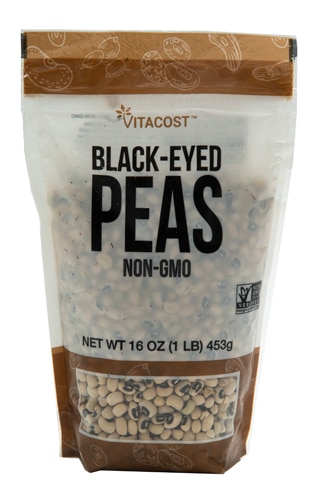Beans, beans, good for your heart—and just about every other part of your body, too. Not only are beans, low in fat with no cholesterol, they are also packed with fiber, high in protein and loaded with antioxidants. In fact, a study conducted by the U.S. Department of Agriculture, published in the June 2004 issue of the Journal of Agricultural and Food Chemistry, named pinto, red kidney and small red beans as three of the top five antioxidant foods, with a handful of other beans landing within the top 40.
Beans have long been a go-to source of protein for vegetarians, but recent studies showing that consumption of these nutrient-rich legumes can help ward off a number of health conditions is making them a staple for meat lovers, too.
For example, a study published in the February 2011 issue of the European Journal of Nutrition revealed some of the health benefits of incorporating more beans into the diet. Researchers placed two groups of overweight individuals on low-calorie diets, with one group consuming no more than a serving of beans per week and the other eating four servings or more.
At the end of eight weeks, both groups lost weight; but weight loss was greater among participants who ate more beans. This group also had a greater drop in some inflammatory markers known to raise the risk for atherosclerosis, diabetes and hypertension. Such benefits are likely due to the legumes’ high magnesium and phytochemical content, as well as their hefty dose of fiber.
The soluble fiber in beans does more than just reduce inflammation, it actually forms a gel-like substance in the digestive tract, which adheres to cholesterol-rich bile, ferrying it out of the body. In a study published in the February 2001 issue of Nutrition Review, two groups of people with type 2 diabetes followed diets with different amounts of high-fiber foods, such as beans. One group ate 24 grams of fiber per day and the other ate 50 grams. Those on the high-fiber diet were shown to have lower blood sugar and insulin levels. Their total cholesterol levels were also reduced by nearly 7 percent and their triglyceride levels by 10.2 percent.
Turn down the gas
For some people, knowing beans are a healthy choice is not enough of a reason to put up with the intestinal gas they can produce. Thankfully, there are a few things you can do to mitigate this problem. Start by soaking sorted, dried beans for 12 to 15 hours before cooking. Pour off the water used for soaking and rinse several times. Adding herbs such as cumin, turmeric, coriander, fennel or garlic to cooking beans also seem to diminish the phytic acid that causes flatulence.
If you opt for the convenience of cooked, canned beans, be sure to read labels. Many brands contain a hefty dose of sodium—between 140 and 500 mg per half-cup serving—so rinse canned beans before serving or look for low- or no-sodium options. You can also find organic bean varieties, as well as those packed in cans free of BPA—a potentially harmful chemical used in the production of conventional can linings.
5 best beans
You can find an array of beans—all sizes and shapes—in the bulk section and canned food aisle of most grocery stores. The five beans listed below are some of the most popular, and all fall in the USDA’s top 40 most antioxidant-rich foods.
Pinto beans have a beige background with red-mauve splashes of color when dry, and turn a rich brown color when cooked. Like all beans, they contain soluble fiber, which helps lower cholesterol and keep blood sugar levels steady. Pinto beans are also a great source of folate, protein and vitamin B1, as well as the minerals iron, magnesium, manganese and potassium.
Serving suggestions: Try pinto beans in chili, add to veggie soups or puree cooked pintos with fresh herbs to make a spread for crackers or crudités.
Red kidney beans hold their kidney shape during cooking and absorb flavors well, which makes them perfect for simmered dishes. They are a good source of the minerals manganese, potassium, copper and phosphorus, and they deliver a hefty dose of calcium. Kidney beans should always be cooked thoroughly, as the raw bean contains phytohemagglutinin, a potentially toxic compound that is eliminated via proper cooking.
Serving suggestions: Kidney beans are great in salads, soups and chili and as the main ingredient in veggie burgers.
Black beans, like other bean varieties, are full of fiber, minerals and phytochemicals, but they may also be especially good at supporting the digestive tract. A 2002 animal study published in Nutrition and Cancer revealed that black beans lowered the risk of colon cancer tumors by allowing good bacteria in the colon to efficiently produce butyric acid—a process that helps them thrive.
Serving suggestions: Use them in hearty soups, rich dips and taco fillings. You can even find chocolate cake and brownie recipes that include black beans.
Navy beans are small, creamy-white beans that were a staple food for the U.S. Navy in early 20th century, hence their name. Navy beans are a great source of vegetarian protein, with one cup supplying 15 grams of protein—with all of the essential amino acids except taurine.
Serving suggestions: Navy beans are perfect for making a delicious variation on traditional chili. They hold up well in soups and can even be used to make gluten-free cakes and muffins.
Black-eyed peas are actually not peas, but rather white beans with a black dot. They boast hefty amount of antioxidants, potassium and folate, and some Southerners believe eating them at the turn of the New Year brings good luck.
Serving suggestions: Black eyed peas can be tossed with tomatoes, peppers, herbs and a bit of oil and vinegar to make a cold salad. The most traditional use of black eyed peas is in the Southern dish, Hoppin’ John, in which they are combined with rice and Cajun seasonings.




